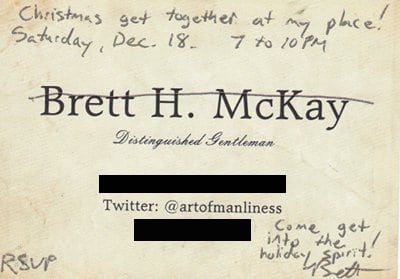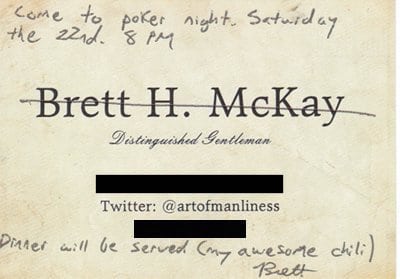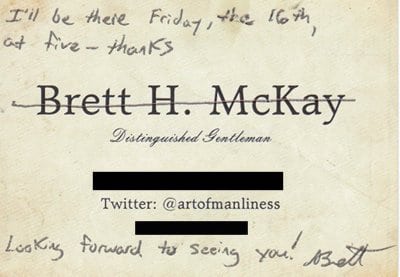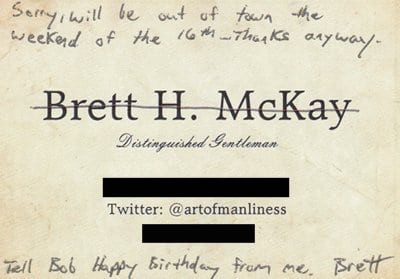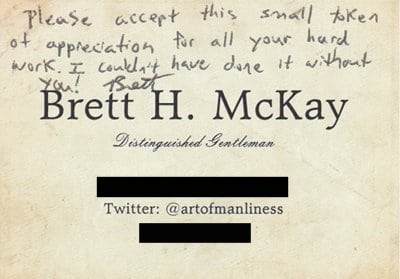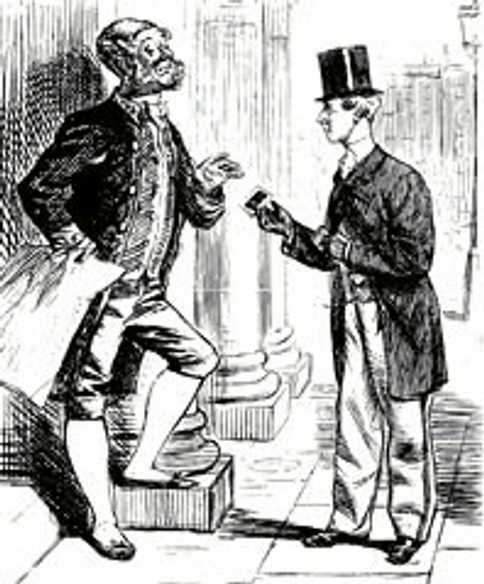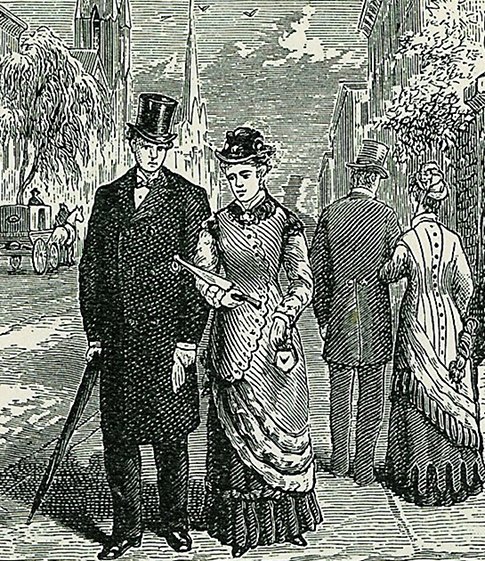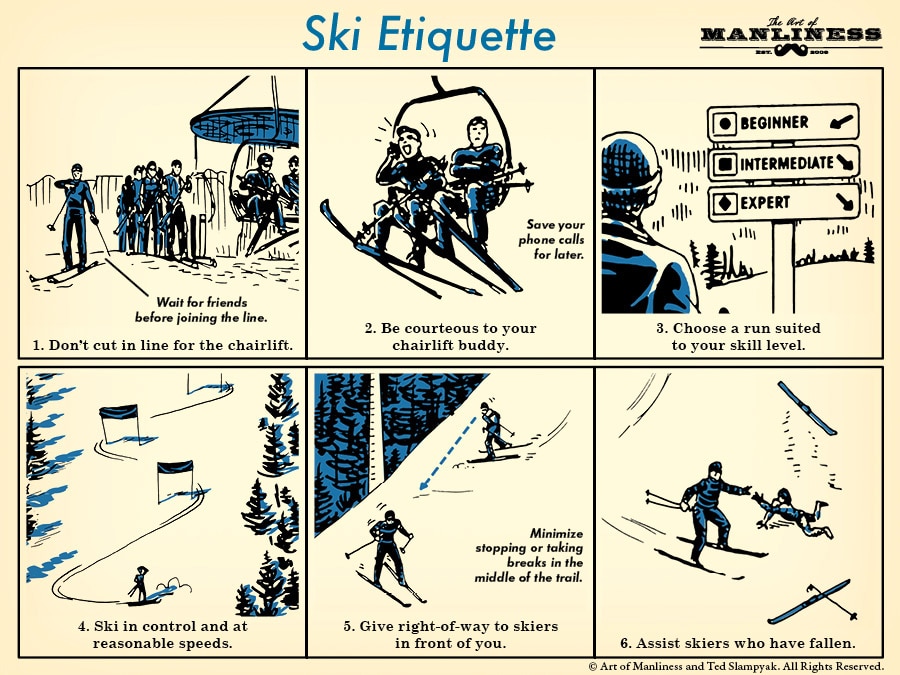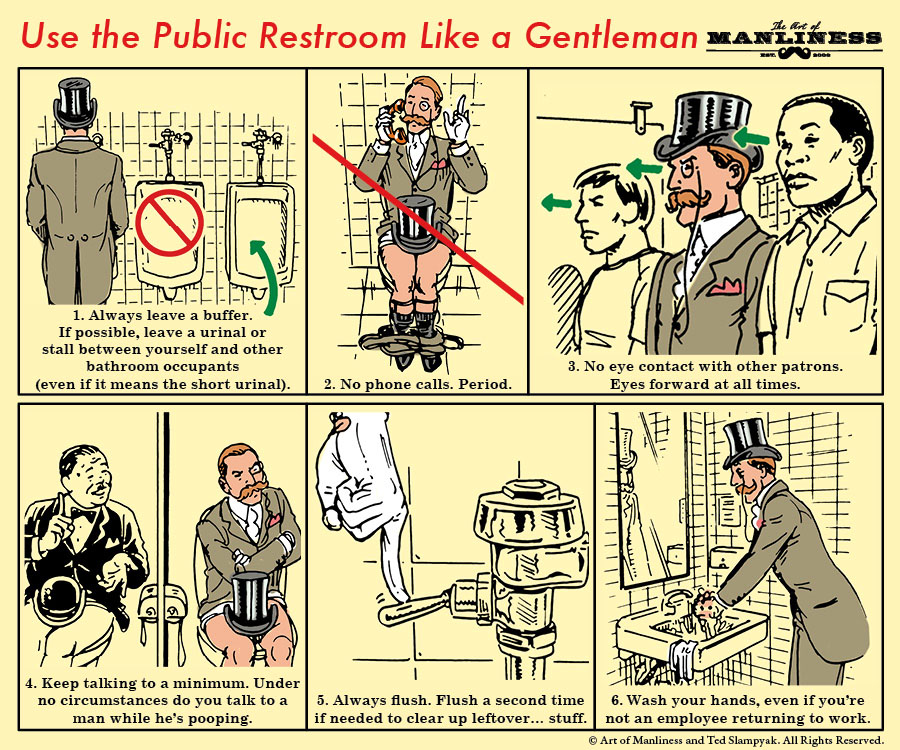
Maybe you’ve been using calling cards for quite some time. Or perhaps you recently invested in a set when we introduced our line of AoM-designed calling cards. Either way you’ve likely already been putting them to use in the obvious way-handing them to new friends, business contacts, and potential love interests. Calling cards truly do make an excellent networking tool, but there are other ways-both fun and practical-to employ them as well.
During the 19th century, the use of calling cards was surrounded with a great deal of rules and etiquette. You would “call” upon someone by visiting their home and leaving your calling card in a tray by the door. Bending down the different corners of the cards meant various things and messages were also expressed through initials corresponding to French expressions (for example p. f. – pour féliciter for congratulations and p. r. –pour remercier for gratitude). This calling card culture has all but vanished, and trying to continue to use the cards in this way will simply elicit head scratching if not umbrage at what others may perceive as your pomposity. You don’t want your friends and new acquaintances to have to consult an etiquette book to decipher your messages.
But there are some uses of the calling card that survived well into the mid 20th century and can easily be revived by modern gentlemen. Practical and tasteful, using your calling cards in the following ways may still be an unexpected gesture, but it will not be an unwelcome one. Giving and receiving calling cards is so enjoyable that you’ll probably just start a trend.
Here are three ways to use your calling card that you may not have considered, along with some examples of each.
As invitations. If you’re throwing an informal party, use your cards as invitations by writing the occasion, the date, and the time across the top of your cards and mailing them out. The small size of the cards limits how much you can write-making this a painless way to create invites.
If you want an answer, write RSVP in the lower left hand corner. If your card includes only your name without your contact information, write your home address, phone number, or email address under the RSVP to indicate how you’d like to be contacted. If the name on your card says, “Mr. John Smith” it is traditional to cross out the “Mr.,” and to cross out the whole thing if you sign it with your first name. But you don’t have to follow this custom as it may confuse modern recipients.
As replies to invitations. If you hate using the phone as much as I do, you’ll be happy to know that you can also use your calling card to accept or decline an invitation from another person. To accept an invitation, write something like, “I’ll be there,” or “Accept with pleasure,” at the top of the card along with the date and time for which you are accepting and send it in the mail. When declining an invitation, write the date but not the hour. You must also write the reason you will not be able to attend. The limited space of the calling card frees you from having to make a belabored, rambling excuse as to why you cannot come, an awkward exercise that leads many men to simply avoid RSVPing at all. Whether you are declining or accepting, it is again traditional to cross out the “Mr.” in your name or your entire name if you and the host/hostess are on a first name basis.
As cards. Except at Christmastime when festive tags are the name of the game, you should enclose your calling card with all gifts and flowers in lieu of a greeting card. Instead of facing the nearly impossible task of filling the yawning expanse of a greeting card, simply write a short message on your calling card and you’re done. “Get well soon” looks barren and desolate swimming on the large blank canvas of a greeting card; written on a calling card, it looks handsome and appropriate.


